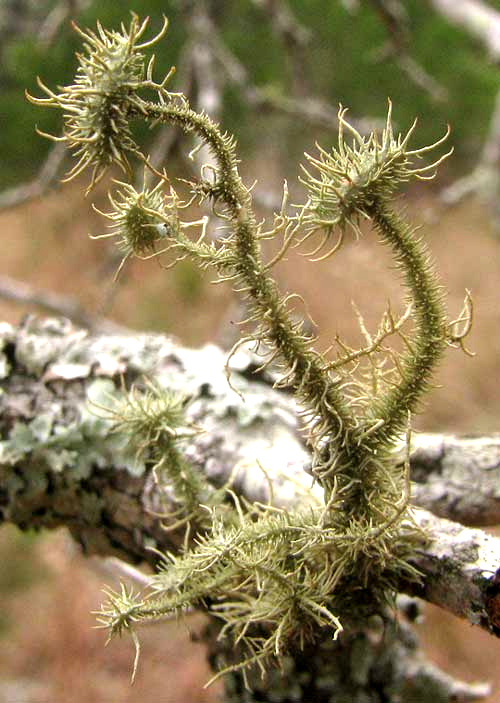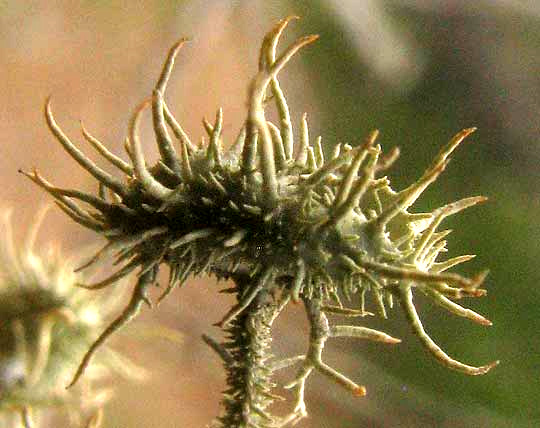Excerpts from Jim Conrad's
Naturalist Newsletter
from the December 15, 2013 Newsletter issued from the Frio Canyon Nature Education Center in the valley of the Dry Frio River in northern Uvalde County, southwestern Texas, on the southern border of the Edwards Plateau; elevation ~1750m (~5750 ft); N29.62°, W99.86°; USA
STRIGOSE BEARD LICHEN
On a dead tree limb wedged among the middle branches of a liveoak, a tuft of lichen only about 1½ inch tall (4cm) caught my eye, for it wasn't one of the common ones. Up close, the little being displayed surprising complexity and pleasing form. You can see it below:

It's a fruticose, or "shrub-like," lichen. Noteworthy are its branched stems heavily invested with numerous sharp but not very stiff spinelike affairs of different lengths, called fibrils. Major branches are tipped with flattish knobs, one shown close up below:

A view from above of the same knob shows that it's shaped like a squashed bowl, and that fibrils only arise outside the cup, shown below:

Seeing the cuplike structure, we know that this is an apothecium, which means that it's a reproductive structure. Spores are ejected from microscopic structures called asci lining the apothecium's interior.
This is a species of the big, widely distributed and well known genus Usnea. Many Usnea species are known as beard lichens or old-man's-beards, because they are white or very pale and often dangle like bushy beards. It can be hard to distinguish the many Usnea species, but I'm filing this on the Internet under the name USNEA STRIGOSA because it looks like that species (as do several others), plus it's one of the more common Usnea species possibly found in our area. In books a common name often given it is Strigose Beard Lichen, but that's a made-up name based on the "strigosa" in its binomial, the word "strigose" referring to slender bristles that lean close to the plant surface, though this species' fibrils don't lean close at all.
Strigose Beard Lichen occurs worldwide, but mainly in eastern and southeastern North America.